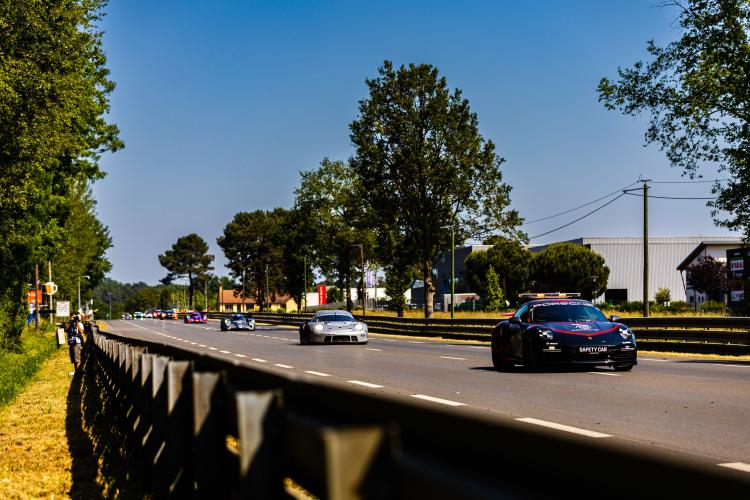How does the new procedure work?
In the event of a major incident, and in addition to a slow zone or full-course yellow, the race director may decide to neutralize the race by deploying the safety car. This is how it will be done this year:
- Three safety cars take the track (A, B and C).
- At the end of an incident, Safety Cars B and C leave the track and all the cars bunch up behind Safety Car A (called a merge).
- All cars with their class leader behind them are eligible for a pass which allows them to join the back of the field by passing the Safety Car and going around the entire circuit.
- Then the field is sorted by class thanks to a drop-back. It affects all classes, but only LMP2 and LMGTE Ams will make a move. The LMP2s will stand on the right side of the track and be allowed to pass through the field, then the LMGTE Ams will do the same. After that the field is in order with Hypercars, LMP2 and LMGTE Ams each lined up behind their respective leader.
Why the new procedure?
After each run of the 24 Hours, there is a debriefing with the competitors in order to understand the race and how the regulations apply in practice. The Safety Car procedure was contested in 2018 in the LMGTE Pro class, and competitors requested that the procedure be revised. A long process of analysis and testing has been carried out over the past five years, culminating in this new procedure tested and approved last Sunday during Test Day.
How long does it last?
The new procedure is divided into two phases. The first is related to safety through the intervention of the three Safety Cars. The time required will vary depending on the incidence and duration of the intervention. The second is the sports phase which (if all goes well) should last about 10 minutes.
Note: This new procedure will not apply during the last hour of the race and the old procedure will be used with the three Safety Cars.


